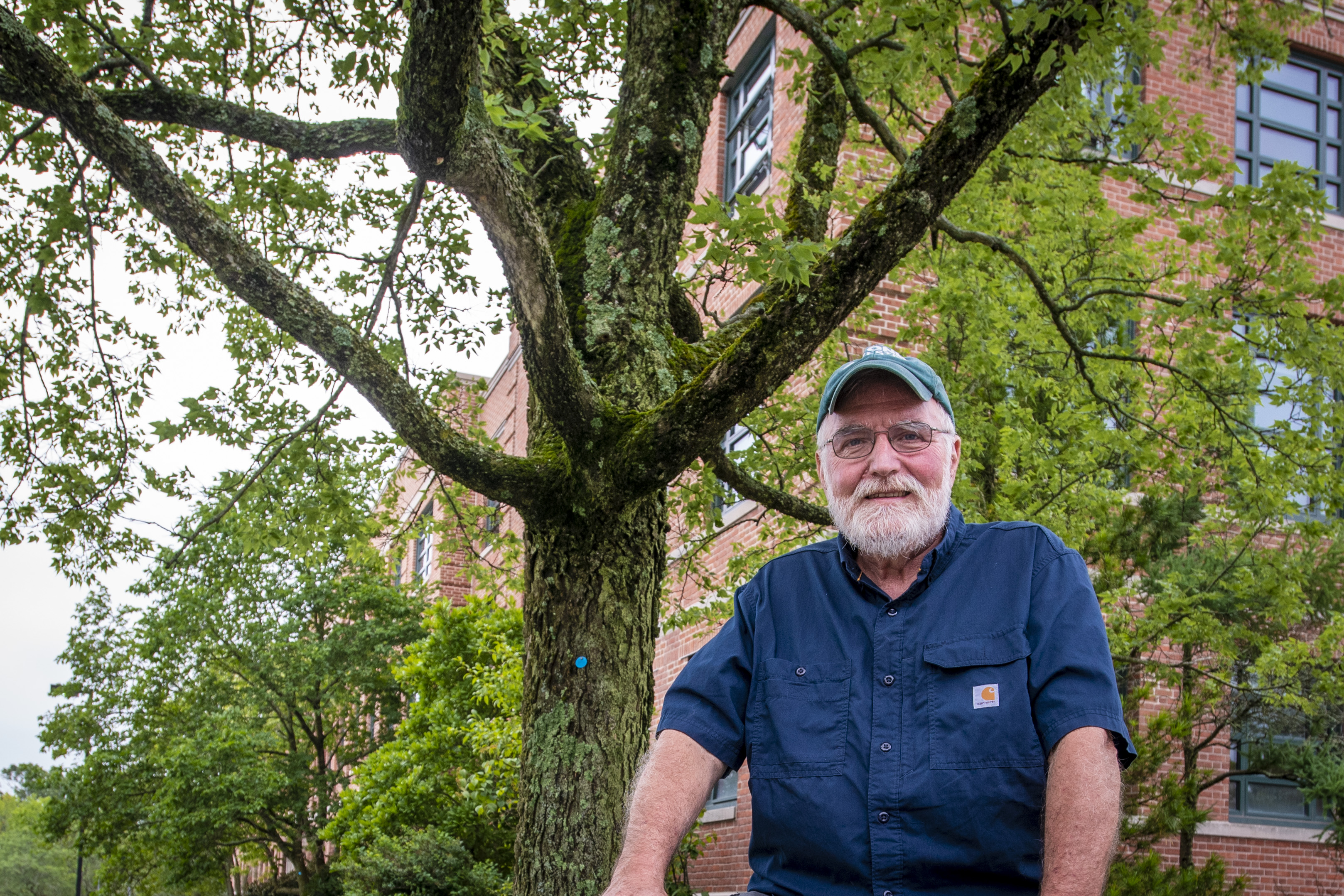In recent years, Connecticut has lost millions of trees, primarily due to an infestation of gypsy moths.
If you are hoping to replace some of those lost trees, it’s hard to know which species to plant. Plant the same tree and hope it does not get damaged by whatever killed the previous tree? Try a different species? Stick to native, or try a non-native tree species?
Thomas Worthley, associate extension professor, spoke with UConn Today and offered some suggestions for how to decide.
Q: If a tree has been killed and removed, how do we decide what to plant in its place?
A: A good place to start is to know what was growing there before. Understand the site and the site requirements for the trees that you want to grow. Look around your neighborhood or your property to see what is thriving.
I would suggest that if what was growing there was oak, for example, it’s a good oak site. Don’t hesitate to plant another – such as a nice red or white oak, or pin oak. Those are good choices and they are native.
If the site is sunny and moist, a tulip poplar might work. A shady, moist site could support yellow birch or black gum (black tupelo). For softwood species, white pine can be a good substitute for a white oak. They often grow in the same site. There are lots of options.
I would try to grow hickory trees. They are great wildlife assets for the nuts and the bark, great shade, good color, and there is not much that bothers hickory trees. They are just not as abundant as oaks. Other good native choices include linden (basswood) and hackberry. These are also wildlife-friendly species.
Another option is to see if the previous tree will regenerate and this happens in one of two ways. One way is through seeds. Unhealthy trees will often release a large amount of seeds, so you may have seedlings left behind. The second way is through clonal sprouts from the roots of the tree.
We have an experiment in the UConn Forest, actually, where we harvested some ash last year and found some clumps of ash seedlings. We have made an effort to put up deer barriers around those seedlings to try to protect those trees to regenerate that area.
Q: With climate change and other variables such as the emerald ash borer and the gypsy moth, should we be looking to plant different tree species?
A: Interesting question. In fact, this is one of the topics being debated and studied in our field. Planting climate-adapted species is known as “assisted migration.” Some folks think it is a great idea, and some do not.
Some tree species are more susceptible to stressors than others, but we do not expect that our forests will change before our eyes. Trees growing here will continue to grow here until they are killed or live out their natural lives. However, once they disappear, they may not be replaced by the same species mix.
For example, we are losing ash trees due to the emerald ash borer, and in eastern Connecticut we have lost thousands of oak trees due to gypsy moth defoliation and other factors. In many places, as these upper-canopy trees disappear, they will be replaced by trees that are already present in the lower canopy, the more shade-tolerant maples, beeches, and birches. These trees will receive more light and become the new forest canopy.
This mix of species in the next forest includes other, currently less dominant native species like hickories, maples, and birches, for example. In the future, we might see less of some species and more of others – it depends on the conditions of the site.
Q: Should we worry about non-native tree species?
A: I would not anticipate seeing a big wave of southern species moving in, but we do see other non-natives, like tree-of-heaven and Amur cork appearing following disturbances, and these should be controlled.
We are not going to see a big sweeping change of tree species that are unusual to us.
On the other hand, in many areas where we are losing the oak canopy, in those gaps we’re seeing smaller invasive plants like Oriental bittersweet and Japanese barberry take over. If nothing is done, those plants will be there to stay.
One of the first decisions someone has to contend with on their property is to look around and see what is growing. If it is non-native or invasive plant species, they need to get them out.
There may be tree seedlings in there, but they will not be able to compete with the invasives. On the other hand, if you have seedlings on the ground and they are raspberries or other natives, they may be able to compete.
Q: How has the species mix in Connecticut forests changed in recent years?
A: Just in the span of my career, I have noticed some changes.
One example I have noticed is black walnut. Originally it was seen more in the southern part of the state. In the past, it might have reached a temperature threshold, but now there seem to be more of them throughout the state.
I have also noticed tulip poplar being able to compete in a broader part of the state, and a lot of that has to do with the long-range temperature changes we are experiencing.



